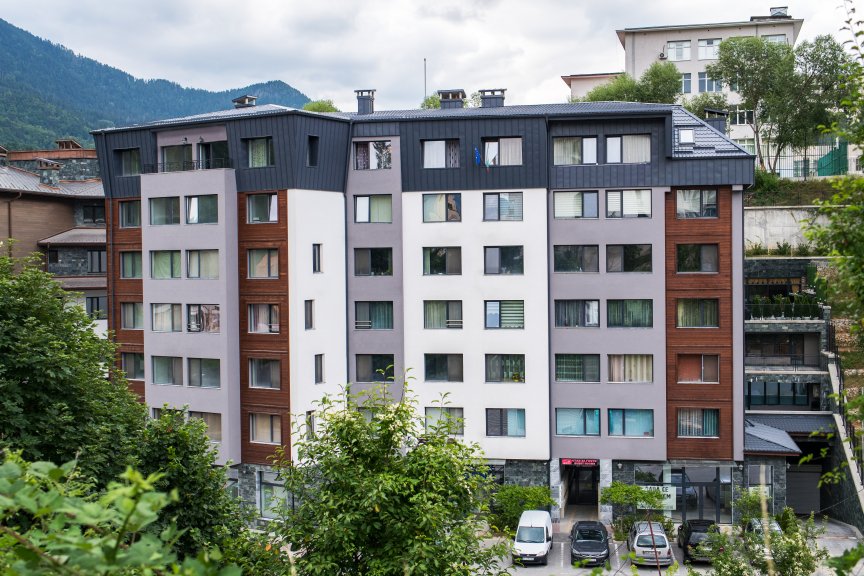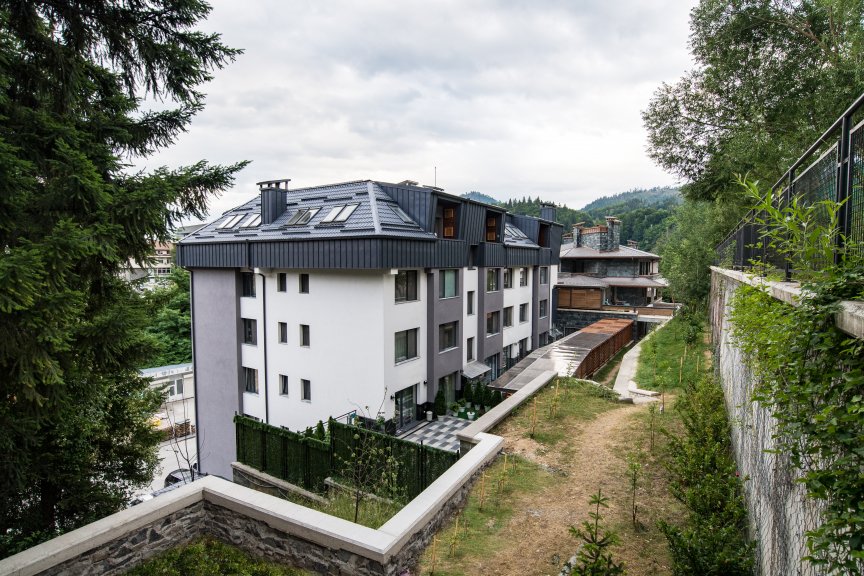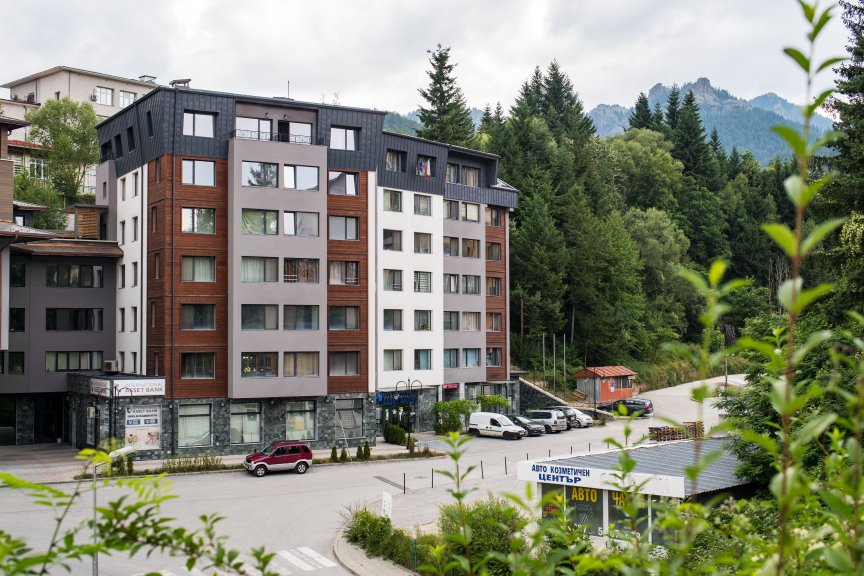New Vision
The building is divided by material and volume both horizontally and vertically. The ground floor is made of stone, in synchrony with the traditions of the region. The materials for the making of the façade are selected in a frugal and precise manner – plaster coats in neutral colours and wooden panelling.
System ociepleń Baumit
Baumit Open
Materiały Baumit
- openTherm / open FassadenDämmplatte
- RatioGlatt / GlättPutz / Ratio 1000
- MPI 25
- Baumacol FlexUni
- StarTex / TextilglasGitter
- StarTrack Duplex / KlebeAnker Duplex
- StarContact White / StarContact KBM
- SilikonTop
Dodatkowa informacja
The architecture of the mixed designation building at 20A Bulgaria blvd. is formed as a consequence of the context of its surrounding – the centre of the town of Smolyan.
The town centre was built in the second half of the 20th century and is characterised by its uniformly styled monolith buildings with definite shapes, skilfully interconnected by terraced external areas. The materials typical of the construction of the façades of these buildings are stone tiling, wood panelling and plaster coating, glass panelling and copper or corrugated-iron roofs.
The building located at 20A Bulgaria blvd. is divided by material and volume both horizontally and vertically. The ground floor is made of stone, in synchrony with the traditions of the region. The materials for the making of the façade are selected in a frugal and precise manner – plaster coats in neutral colours and wooden panelling. The steep terrain is dealt with by the use of terracing and large and spacious external areas are created, which are important for the comfort of the inhabitants. The building roof covers the entire under-roof floor, as in terms of its volume and material it corresponds to the roofs of the buildings situated in the immediate proximity.








